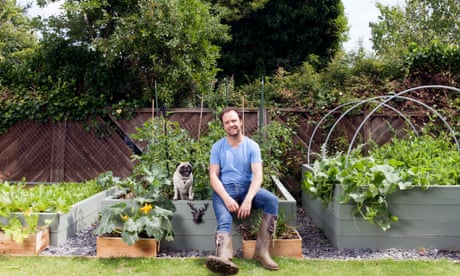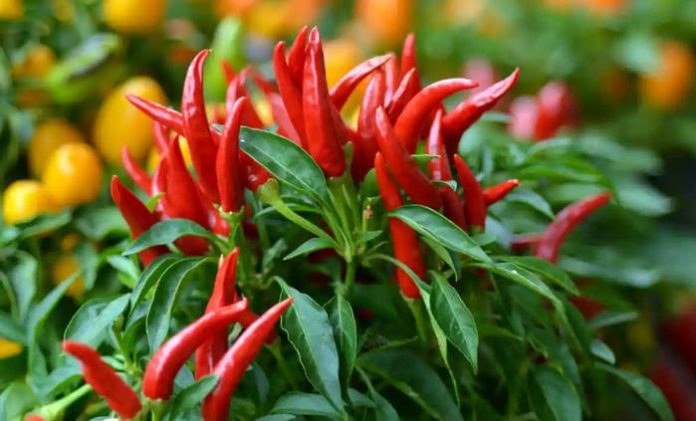rowing your own food is the best game in the world, for at the end of it there’s supper. However, you might break your back doing it, and it will certainly break your heart at some point, probably when slugs get involved. So, where do you start on this bumpy but bountiful road? Many would say radishes, because they give quick results for the impatient newcomer, but the truth is that the line between a crisp, peppery radish and a woody, pithy one is fine and easily missed. As for tomatoes, they are lovely when sun-warmed and ripe from the vine, but not if they have blight from a damp summer.
The truth is, there’s no such thing as a truly effortless crop – all edibles require some attention – but below are a few that are pretty foolproof as long as you do the bare minimum of watering.
If you only have a windowsill

The Lilliputian world of microgreens offers those with the smallest of spaces the opportunity to grow some crops with flavour as well as vitamins and other nutrients. Microgreens are merely seedlings harvested when they are no more than 10cm or so high and grown so close together that they resemble a small forest. You don’t need proper pots or a seed tray: a yoghurt tub or a takeaway container will do, as long as you punch holes for drainage. Microgreens are a one-hit wonder, however – each cut is the end of life for the seedling – so you will need to re-sow every two weeks or so. When buying seeds, check the packages and hunt for those with the most inside.
The entry level into this world, which is vast and runs from amaranth to watercress, is dried peas from the supermarket. Sow them cheek by jowl and cover with just a little compost. The flavour of just-harvested pea shoots is fresh and green, just as if you have been frolicking in a summer meadow. Once you have succeeded here, try the seedlings of radishes, cabbage, broccoli, mustards, Greek cress, basil, perilla (shiso) … The list is endless – even carrot seedlings are delicious.
If you have a bit more space and a sunny enough spot, I would recommend getting a lemon tree or perhaps a kumquat. Not because you are likely to harvest bowls full of fruit, but for the leaves, which harbour all the flavour of the rind, but in a subtle and interesting way. They can be used in curries, puddings or – my favourite – gin and tonic. You could even add some coriander microgreens and truly up your game. Citrus trees need bright, warm conditions and watering twice a week in summer.
If you have space for outdoor pots
Whether they are on a balcony, in a courtyard or just by the back door, pots can offer growing conditions to match open soil, as long as there is plenty of good light and daily watering in the summer. The light bit is essential: too much shade and your crops will struggle. You need at least three hours of sunlight a day to get a decent harvest.
Everyone wants to start with tomatoes, but you will get more bang for your buck buying a chilli plant. Chillies are greedy feeders and they may need housing in five- or even 10-litre pots so you can keep them satiated. Once they start to flower, give them organic tomato feed every other week and one or two plants will keep you supplied all year.

From fork to fork: five cooks and their kitchen gardens
If you don’t like chillies’ heat, at the other end of the spectrum you could try dwarf French beans, which are very easy to grow. Mid-May is the perfect time to start sowing, then repeat-sow every two to three weeks till the end of July so you get a succession of picking right into early autumn. You want to harvest the beans when they are no thicker than a pencil, with just a hint of seed showing inside. The best variety I have found is Faraday; the flavour is unbeatable.
Each plant needs to be 15cm apart from its nearest neighbour. Sow two seeds per station, 2cm deep around the edge of a container so the beans can hang over the edge; this keeps them clean from the soil. Once the flowers appear, make sure you water well as this will help the fruit to set; other than that they will do all the hard work for you. If there’s space in the middle of the pot, you could sow a bee-friendly flower such as calendula to encourage pollination.
If you have soil
The joy of soil is that it does the work for you. Plant roots can grow far into its depths and explore for minerals and nutrients, while friendly microbes help defend against pests and diseases. Establish a perennial by watering it regularly until you see signs of new growth, after which it will basically look after itself.
I can’t think of a better crop for soil than globe artichokes. These architecturally handsome plants have strong silver leaves that reach a metre or so in height, and tall flowerheads for you to harvest. A mature clump can give you up to 10 heads to eat every summer. You will find young plants for sale now; they take a year to establish, but after that you can be picking for many years to come.
If you somehow tire of eating them, you can always make a version of Cynar liqueur by soaking the outer petals in vodka. Or leave them to flower, in which case the bees will thank you and your garden will look quite beautiful.
You need to buy young plants and give them plenty of rich soil to get their roots into, so buy a bag of farmyard manure and dig in a good bucketful with each plant. Three plants are more than enough; plant each one 50cm apart from its neighbour somewhere it can soak up the maximum rays. Other than cutting back the old flower spikes each spring and giving a mulch with compost every autumn (the more you feed, the more flowerheads you will get), there is almost nothing to do other than harvest.
Globe artichokes look lovely planted with easygoing herbs such as lavender, lemon balm, herb fennel and rosemary, and create an effortless pretty garden that you just have to eat.


